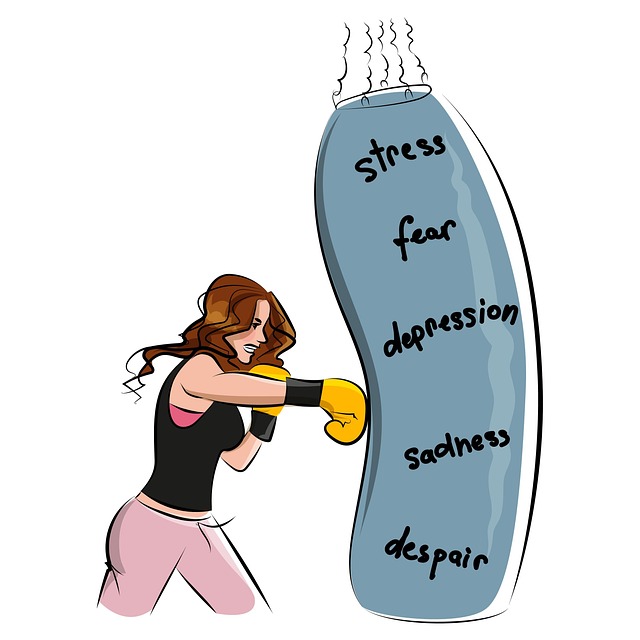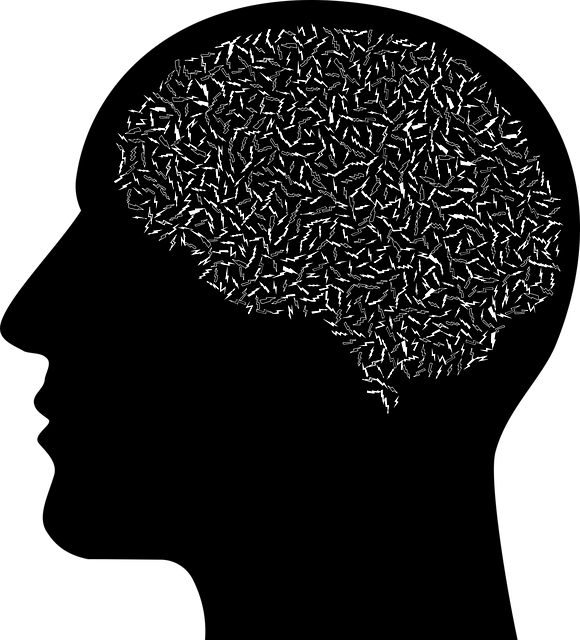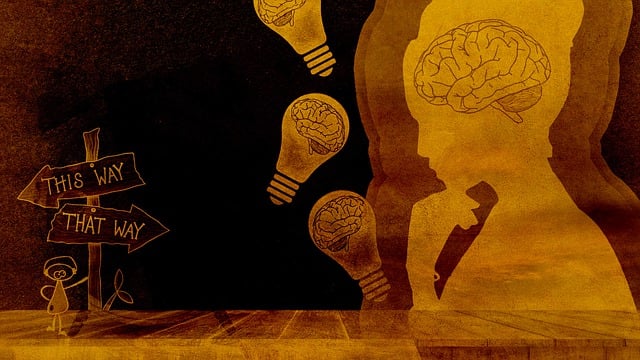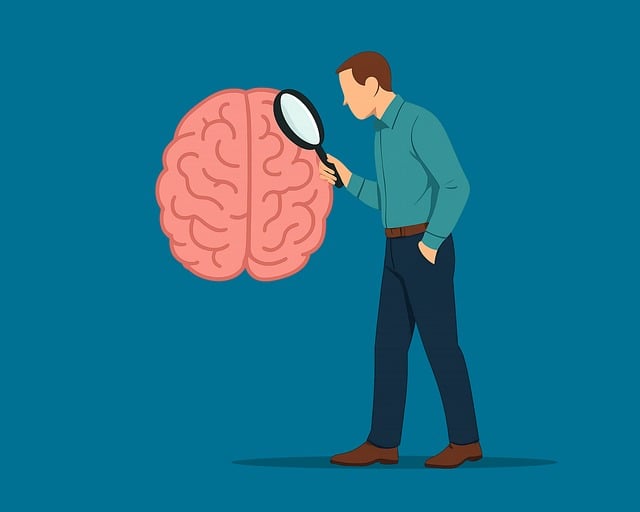Adolescent mental health, especially regarding gender identity issues, is a complex field. Teen brains, still developing, are vulnerable to depression and anxiety. Effective support includes creating safe spaces, implementing inclusive policies, and tailored burnout prevention strategies. Growing interest in gender-specific therapy for teens explores unique challenges, fostering belonging and emotional intelligence. Evaluating youth mental wellness initiatives requires a multi-faceted approach, combining quantitative and qualitative data, including observational measures. Holistic programs integrating diverse therapies, peer support, and community engagement empower teens with mood management tools, ensuring their mental health needs are met.
Mental wellness programs play a crucial role in addressing the unique challenges faced by adolescent teens, especially those navigating gender identity. This article delves into the evaluation methods that shape these initiatives’ success. We explore the complexities of teen brains and the impact of gender-specific therapy, highlighting tailored support systems for optimal well-being. Through an examination of effective metrics and feedback loops, we uncover best practices for implementing and assessing comprehensive mental wellness programs tailored to adolescent teens’ diverse needs, particularly those related to gender identity.
- Understanding Adolescent Mental Health: Unveiling the Complexity of Teen Brains and Gender Identity
- The Impact of Gender-Specific Therapy for Teens: Exploring Tailored Support Systems
- Evaluating Program Effectiveness: Metrics and Methods for Measuring Success in Youth Mental Wellness Initiatives
- Incorporating Feedback Loops: Encouraging Open Communication for Continuous Improvement
- Best Practices for Implementing and Assessing Comprehensive Mental Wellness Programs in Teen Settings
Understanding Adolescent Mental Health: Unveiling the Complexity of Teen Brains and Gender Identity

Adolescent mental health is a complex landscape that demands nuanced understanding, especially when navigating the intricate issues of gender identity. Teen brains are still developing, with regions like the prefrontal cortex and amygdala continuing to mature into the mid-20s. This developmental stage makes adolescents more susceptible to various mental health challenges, including depression, anxiety, and substance abuse disorders.
Gender identity adds another layer of complexity to this picture. The process of understanding and forming one’s gender is deeply personal and can vary widely among teens. Supportive therapy for adolescent teens with diverse gender identities is vital to fostering their overall mental wellness. It involves creating safe spaces where they can express themselves authentically, challenging societal norms that may promote harmful stereotypes, and advocating for inclusive Mental Health Policy Analysis and Advocacy that recognizes the unique needs of this demographic. Burnout prevention strategies tailored for adolescents are also essential, as they navigate academic pressures and social expectations while forming their identities.
The Impact of Gender-Specific Therapy for Teens: Exploring Tailored Support Systems

The effectiveness of mental wellness programs for teenaged individuals has sparked significant interest in tailoring support systems to meet their unique needs. One promising approach is gender-specific therapy, which recognizes the distinct challenges and experiences that adolescents navigate based on their gender identity. This therapeutic model creates safe spaces where teens can explore their emotions, struggles, and identities freely, fostering a sense of belonging and understanding.
By implementing empathy-building strategies, these specialized programs aim to enhance emotional intelligence and resilience among young people. Through techniques that promote mindfulness and teach effective coping mechanisms, such as mind over matter principles, adolescents gain valuable tools for managing stress and anxiety relief. This tailored support system not only addresses the immediate mental health concerns but also empowers teens with lifelong skills to navigate life’s challenges.
Evaluating Program Effectiveness: Metrics and Methods for Measuring Success in Youth Mental Wellness Initiatives

Evaluating the effectiveness of youth mental wellness initiatives is paramount to understanding their impact and identifying areas for improvement. Metrics and methods used should go beyond simple participant satisfaction, delving into measurable outcomes that reflect improved mental health and well-being. For programs catering to adolescent teens exploring gender identity, these assessments can include tracking changes in self-esteem, reduction in symptoms of anxiety or depression, and improvements in coping mechanisms such as mindfulness meditation and positive thinking.
Quantitative data collected through surveys and standardized tests, alongside qualitative feedback from participants and their families, offers a comprehensive view of program success. Observational measures like changes in social interactions and academic performance can also indicate the broader impact of these initiatives. By employing these diverse evaluation methods, mental wellness programs can better understand their effects on vulnerable populations, ensuring that therapy for adolescent teens with gender identity concerns is tailored to meet their unique needs and foster positive outcomes.
Incorporating Feedback Loops: Encouraging Open Communication for Continuous Improvement

Incorporating feedback loops is a powerful strategy within mental wellness programs, fostering an environment of continuous improvement and personalized support. Encouraging open communication between adolescents navigating gender identity issues and therapy providers allows for a dynamic understanding of their evolving needs. Through regular self-awareness exercises, teens can articulate their experiences, feelings, and challenges, providing valuable insights for therapists. This collaborative approach enables the development of tailored interventions, ensuring that therapy aligns with each individual’s unique journey.
Self-care routine development is enhanced when adolescents are actively involved in the feedback process. By participating in stress management workshops organized within the program, teens gain practical tools to cope with daily stressors and promote better mental health. The integration of self-awareness exercises and stress management techniques creates a holistic framework, empowering adolescents to take charge of their emotional well-being, especially when exploring gender identity.
Best Practices for Implementing and Assessing Comprehensive Mental Wellness Programs in Teen Settings

Implementing and evaluating mental wellness programs for teen settings requires a multi-faceted approach to ensure comprehensive support. Best practices involve integrating various therapeutic modalities tailored to the unique needs of adolescents, including those exploring their gender identity. Individual therapy sessions can foster self-awareness exercises, helping teens navigate their emotions and experiences, while group therapy facilitates peer support and a sense of community, addressing social and emotional well-being.
Assessment methods should go beyond standard questionnaires, incorporating qualitative data through interviews and focus groups to gain insights into the teen’s lived experience. This holistic approach, combined with regular policy analysis and advocacy efforts, ensures that mental health services align with the evolving needs of adolescents. By promoting mood management techniques and self-care strategies, comprehensive programs empower teens to take an active role in their mental wellness journey, fostering resilience and a sense of agency.
Mental wellness programs for adolescents must adopt a multifaceted approach, considering the unique complexities of teen brains and gender identity. By implementing tailored therapy models and utilizing robust evaluation methods, we can ensure these initiatives effectively support young individuals. Incorporating feedback loops fosters an environment of continuous improvement, enabling best practices to emerge and thrive in addressing the mental health needs of adolescent teens, particularly those exploring their gender identity. These strategies collectively work towards revolutionizing youth mental wellness, offering comprehensive and effective solutions.









